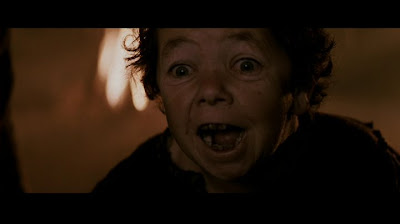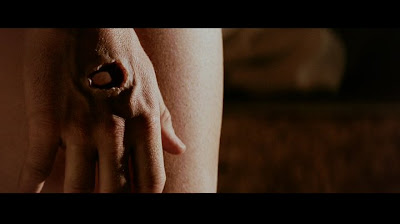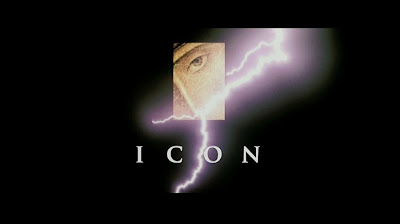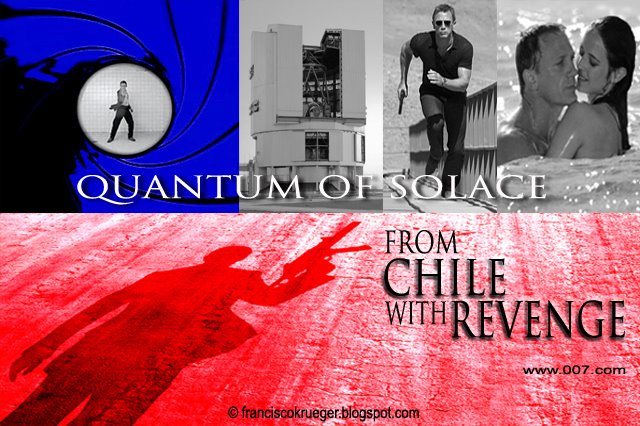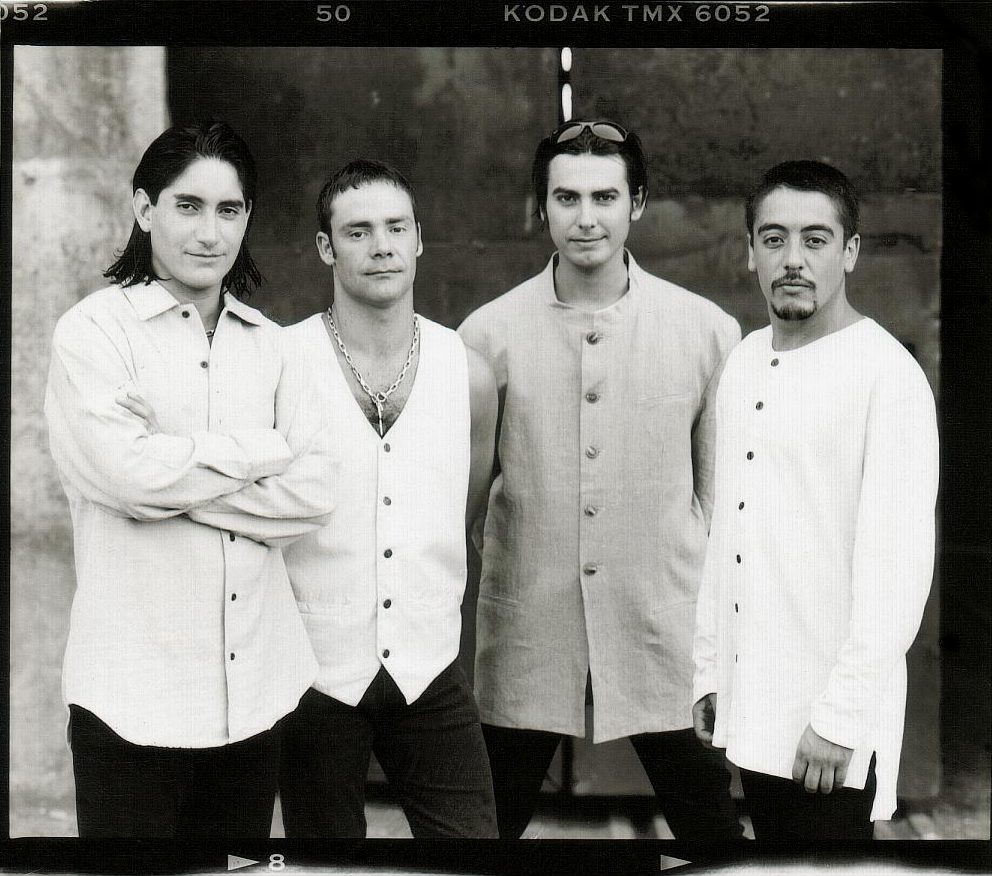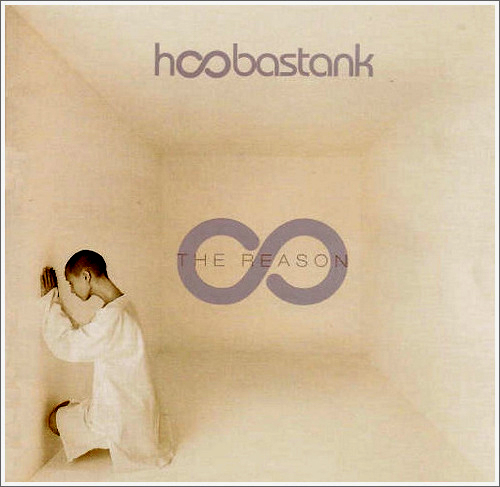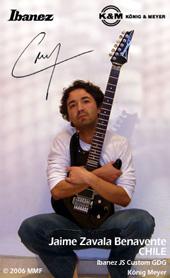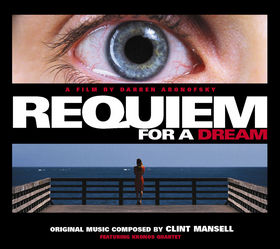The Da Vinci Code
 The Da Vinci Code is a mystery/detective novel by American author Dan Brown, published in 2003 by Doubleday.
The Da Vinci Code is a mystery/detective novel by American author Dan Brown, published in 2003 by Doubleday.This novel has provoked popular interest in speculation concerning the Holy Grail legend and the role of Mary Magdalene in the history of Christianity. According to the premise of the novel, the Vatican knows it is perpetuating a lie about Jesus' bloodline and the role of women in church, but continues to do so to keep itself in power.
Dan Brown's novel was a major success in 2004 and at times it was only outsold by the highly popular Harry Potter series. It spawned a number of offspring books and drew glowing reviews from the New York Times, People Magazine and the Washington Post.[2] It also re-ignited interest in the history of the Roman Catholic Church. As well as re-invigorating interest in the Church, The Da Vinci Code, itself preceded by other Grail books such as The Holy Blood and the Holy Grail by Michael Baigent and others, and Umberto Eco's Foucault's Pendulum, has inspired a number of novels very similar to it, including Raymond Khoury's The Last Templar, and The Templar Legacy by Steve Berry.
It is a worldwide bestseller which had printed 60.5 million copies by May 2006 and has been translated into 44 languages. It is thought to be the fourteenth best-selling book of all time. Combining the detective, thriller and conspiracy fiction genres, the book is the second book by Dan Brown to include the character Robert Langdon, the first being his 2000 novel Angels and Demons. In November 2004 Random House published a "Special Illustrated Edition" with 160 illustrations.
In 2006, a film adaptation, The Da Vinci Code, was released by Columbia Pictures.
The book describes the attempts of Robert Langdon, Professor of Religious Symbology at Harvard University, to solve the murder of renowned curator Jacques Saunière (see Bérenger Saunière) of the Louvre Museum in Paris. The title of the novel refers, among other things, to the fact that Saunière's body is found in the Denon Wing of the Louvre naked and posed like Leonardo da Vinci's famous drawing, the Vitruvian Man, with a cryptic message written beside his body and a Pentacle drawn on his stomach in his own blood.
The interpretation of hidden messages in Leonardo's famous works, (which relate to the concept of the Sacred feminine) including the Mona Lisa and The Last Supper, figure prominently in the solution to the mystery.
The novel has several concurrent subplots interweaving the lives of different characters. Eventually all the characters are brought together and the subplots resolved in the denouement. The unraveling of the mystery requires the solution to a series of brain-teasers, including anagrams and number puzzles. The ultimate solution is found to be intimately connected with the possible location of the Holy Grail and to a mysterious society called the Priory of Sion, as well as to the Knights Templar. The story also involves the Roman Catholic organization Opus Dei.The novel is the second book by Brown in which Robert Langdon is the main character. The previous book, Angels and Demons, took place in Rome and concerned the Illuminati. Although Angels and Demons is centered on the same character the plots are not dependent upon each other. The next book is tentatively scheduled for release in 2008. Its title is The Solomon Key, and it is understood to concern Freemasonry[citation needed].
Characters and their involvement in The Da Vinci Code
These are the principal characters that drive the plot of the story. Some have names that are puns, anagrams or hidden clues:
Robert Langdon
Jacques Saunière
Sophie Neveu
Bezu Fache
Silas
Bishop Manuel Aringarosa
André Vernet
Sir Leigh Teabing
Rémy Legaludec
Lieutenant Jérôme Collet
Guardian of the Rosslyn Trust
Apparently, the relationship between Langdon and Vittoria Vetra from Angels and Demons has ended. The full message Saunière wrote on the floor of the Louvre contained the line "P.S. Find Robert Langdon". This was the reason Bezu Fache suspected Langdon of being the murderer. Fache had erased this line before Langdon arrived so that Langdon would not be aware that the police suspected him. Sophie Neveu saw the entire text of the message when it was faxed to her office by the police. Sophie realized immediately that the message was meant for her, since her grandfather used to call her "Princess Sophie" (i.e. "PS"). From this, she also knew Langdon to be innocent. She informs him of this secretly when they are in the Louvre by having him call her personal voicemail box and listen to the message that she had left there for him.
At the end of the book, Robert Langdon and Sophie Neveu seem to be falling in love. They arrange to meet in Florence as Robert and Vittoria did in Angels and Demons.
Jacques Saunière was the Grand Master of the Priory of Sion and therefore knew the hidden location of the "keystone", which leads to the Holy Grail and documents which would shake the foundation of Christianity and the Church. He was killed in an attempt to extract this information from him and eliminate the top members of the Priory of Sion.
The reason that Sophie Neveu disassociated herself from her grandfather is that she discovered him participating in a pagan sex ritual (Hieros Gamos) at his home in Normandy, when she made a surprise visit there during a break from boarding school. (That she had observed something was mentioned but what it was that she saw was revealed to no one, including the reader, until near the end when she revealed it to Robert.)
The other three lines of Saunière's blood message are anagrams. The first line are the digits of the Fibonacci sequence out of order. The second and third lines ("O, Draconian devil!" and "Oh, lame saint!") are anagrams respectively for "Leonardo da Vinci" and "The Mona Lisa" (in English). These clues were meant to lead to a second set of clues. On the glass over the Mona Lisa Saunière wrote the message "So dark the con of Man" with a curator's pen that can only be read in ultra-violet light. This clue is an anagram for Madonna of the Rocks, another Da Vinci painting hanging nearby. Behind this painting, Saunière hid a key. On the key, written with the curator's pen, is an address.
The key opens a safe deposit box at the Paris branch of the Depository Bank of Zurich. Saunière's account number at the bank is a 10-digit number listing the digits of the first eight Fibonacci numbers: 1 1 2 3 5 8 13 21.
The instructions that Saunière revealed to Silas at gunpoint are actually a well-rehearsed lie, namely that the keystone is buried in the Church of Saint-Sulpice beneath an obelisk that lies exactly along the ancient "Rose Line" (the former Prime Meridian which passed through Paris before it was redesignated to pass through Greenwich). The message beneath the obelisk simply contains a reference to a passage in the Book of Job (38:11a, KJV) which reads in part "Hitherto shalt thou go and no further". When Silas reads this, he realizes he has been duped.
The keystone is actually a cryptex, a cylindrical device supposedly invented by Leonardo Da Vinci for transporting secure messages. In order to open it the combination of rotating components must be arranged in the correct order. If the cryptex is forced open an enclosed vial of vinegar ruptures and dissolves the message, which was written on papyrus. The rosewood box containing the cryptex contains clues to the combination of the cryptex, written in backwards script in the same manner as Leonardo's journals. While fleeing to England aboard Teabing's plane, Langdon solves the riddle and finds the combination to be "S-O-F-I-A".
The keystone cryptex actually contains a second smaller cryptex with a second riddle that reveals its combination. The riddle, which says to seek the orb that should be on the tomb of "a knight a pope interred", refers not to a medieval knight, but rather to the tomb of Sir Isaac Newton, who was buried in Westminster Abbey, and was eulogized by Alexander Pope (A. Pope). The missing orb refers to the apple which, in popular legend, fell on Newton and inspired the development of his theory of gravity, therefore the combination to the second cryptex is "A-P-P-L-E".
The Teacher is Sir Leigh Teabing. He learns of the identities of the leaders of the Priory of Sion, bugs their offices and has Silas assassinate them. Rémy is his collaborator. It is Teabing who contacted Bishop Aringarosa, hiding his identity, and duped him into financing the plan to find the Grail. He never intended to hand the Grail over to Aringarosa but is taking advantage of Opus Dei's resolve to find it. Teabing believes that the Priory of Sion has broken its vow to reveal the secret of the Grail to the world at the appointed time. and plans to steal the Grail documents and reveal them to the world himself. It was he who informed Silas that Langdon and Sophie Neveu were at his chateau. He did not seize the keystone from them himself because he did not want to reveal his identity. He summoned Silas to seize the keystone in his house, but himself thwarted Silas, in order to gain Langdon and Sophie's further help with decoding the cryptex. Subsequently, the police raided the house, having followed the tracking device in the truck Langdon had stolen. Teabing led Neveu and Langdon to the Temple Church in London, knowing full well that it was a dead end, in order to stage the hostage scene with Rémy and thereby obtain the keystone without revealing his real plot to Langdon and Neveu. The call Silas received while riding in the limousine with Rémy is in fact Teabing, surreptitiously calling from the back of the limousine.
In order to erase all knowledge of his work, Teabing kills Rémy by giving him cognac laced with peanut powder, knowing Rémy has a deadly allergy to peanuts. Thus, Rémy dies of an anaphylactic shock. Teabing also anonymously tells the police that Silas is hiding in the London headquarters of Opus Dei.
In a showdown with Teabing in Westminster Abbey, Langdon secretly opens the second cryptex and removes its contents before destroying it in front of Teabing. Teabing is arrested and led away while fruitlessly begging Langdon to tell him the contents of the second cryptex and the secret location of the Grail.
Bishop Aringarosa and Silas believe they are saving the Church, not destroying it.
Bezu Fache figures out that Neveu and Langdon are innocent after discovering the bugging equipment in Teabing's barn.
Silas accidentally shoots Aringarosa outside the London headquarters of Opus Dei while fleeing from the police. Realizing his terrible error and that he has been duped, Aringarosa tells Bezu Fache to give the bearer bonds in his briefcase to the families of the murdered leaders of the Priory of Sion. Silas dies of fatal wounds.
The final message inside the second keystone actually does not refer to Rosslyn Chapel, although the Grail was indeed once buried there, below the Star of David on the floor (the two interlocking triangles are the "blade" and "chalice", i.e., male and female symbols).
The docent in Rosslyn Chapel is Sophie's long-lost brother.
The guardian of Rosslyn Chapel, Marie Chauvel, is Sophie's long-lost grandmother, and the wife of Jacques Saunière. She is the woman who participated in the sex ritual with Jacques Saunière.
Even though all four of the leaders of the Priory of Sion are killed, the secret is not lost, since there is still a contingency plan (never revealed) which will keep the organization and its secret alive.
The real meaning of the last message is that the Grail is buried beneath the small pyramid (i.e., the "blade", a male symbol) directly below the inverted glass pyramid of the Louvre (i.e., the "chalice", a female symbol, which Langdon and Sophie ironically almost crashed into while making their original escape from Bezu Fache). It also lies beneath the "Rose Line," which is similar to "Rosslyn." Langdon figures out this final piece to the puzzle in the last pages of the book, but he does not appear inclined to tell anyone about this. See La Pyramide Inversée for further discussion.
As explained by Leigh Teabing to Sophie Neveu, the figure at the right hand of Jesus is supposedly not the apostle John, but Mary Magdalene. According to the book Mary Magdalene was the wife of Jesus Christ and was in fact pregnant with his child when Jesus was crucified. The absence of a chalice in the painting supposedly indicates that Leonardo knew that Maria Magdalene was actually the Holy Grail (the bearer of Jesus' blood). This is said to be reinforced by the letter "V" that is created with the bodily positions of Jesus and Mary, as "V" is the symbol for the sacred feminine. The apparent absence of the "Apostle John", under this interpretation, is explained by identifying John as "the Disciple Jesus loved", allegedly code for Mary Magdalene (see also Second Apocalypse of James). The book also notes that the color scheme of their garments are inverted: Jesus wears a red blouse with royal blue cape; John/Mary wears a royal blue blouse with red cape — perhaps symbolizing two bonded halves of marriage. Also, if you move John/Mary to right of Jesus, you will see his head fits perfectly onto Jesus' shoulder as if to lay her head on his shoulder.
According to the novel, the secrets of the Holy Grail, as kept by the Priory of Sion, are as follows:
The Holy Grail is not a physical chalice, but a woman, namely Mary Magdalene, who carried the bloodline of Christ.
The Old French expression for the Holy Grail, San gréal, actually is a play on Sang réal, which literally means "royal blood" in Old French.
The Grail relics consist of the documents that testify to the bloodline, as well as the actual bones of Mary Magdalene.
The Grail relics of Mary Magdalene were hidden by the Priory of Sion in a secret crypt, perhaps beneath Rosslyn Chapel.
The Church has suppressed the truth about Mary Magdalene and the Jesus bloodline for 2000 years. This is principally because they fear the power of the sacred feminine in and of itself and because this would challenge the primacy of Saint Peter as an apostle.
Mary Magdalene was of royal descent (through the Jewish House of Benjamin) and was the wife of Jesus, of the House of David. That she was a prostitute was slander invented by the Church to obscure their true relationship. At the time of the Crucifixion, she was pregnant. After the Crucifixion, she fled to Gaul, where she was sheltered by the Jews of Marseille. She gave birth to a daughter, named Sarah. The bloodline of Jesus and Mary Magdalene became the Merovingian dynasty of France.
The existence of the bloodline was the secret that was contained in the documents discovered by the Crusaders after they conquered Jerusalem in 1099 (see Kingdom of Jerusalem). The Priory of Sion and the Knights Templar were organized to keep the secret.
The secrets of the Grail are connected, according to the novel, to Leonardo Da Vinci's work as follows:
Leonardo was a member of the Priory of Sion and knew the secret of the Grail. The secret is in fact revealed in The Last Supper, in which no actual chalice is present at the table. The figure seated next to Christ is not a man, but a woman, his wife Mary Magdalene. Most reproductions of the work are from a later alteration that obscured her obvious female characteristics.
The androgyny of the Mona Lisa reflects the sacred union of male and female which is implied in the holy union of Jesus and Mary Magdalene. Such parity between the cosmic forces of masculine and feminine has long been a deep threat to the established power of the Church. The name Mona Lisa is actually an anagram for "Amon L'Isa", referring to the father and mother gods of Ancient Egyptian religion (namely Amun and Isis).
A number of different authors also speculate about the possibility of Jesus becoming a father. There are at least three children attributed to him, a daughter Tamar, born before the Crucifixion, and two sons Jesus (the Jesus Justus from the New Testament) and Josephes, both born after the Resurrection. Although their names are now part of the common culture of conspiracy writers, only two decades ago, when Holy Blood, Holy Grail was written, the names were not mentioned. The royal descents that lie at the heart of The Da Vinci Code mystery centre on the family of Josephes, who is supposed to be the grandfather of Aminadab del Graal, first of the "Fisher Kings". However the genealogies that are quoted in Grail lore appear to record too few generations, with children regularly being born to fathers in their 40s.
Part of the advertising campaign for the novel was that the artwork in the American version of the bookjacket held various codes, and that the reader who solved them via the author's website would be given a prize. Several thousand people actually solved the codes, and one name was randomly chosen to be the winner, with the name announced on live television, Good Morning America, in early 2004. The prize was a trip to Paris.
The five hidden puzzles reveal
That the back of the book jacket conceals latitude and longitude coordinates, written in reverse, light red on dark red. Adding one degree to the latitude gives the coordinates of the headquarters of the Central Intelligence Agency in Northern Virginia, which is the location of a mysterious sculpture called Kryptos. The coordinates were taken from part of the decrypted text of part 2 of the sculpture (part 4 has never been solved). When Brown has been asked why the coordinates are one degree off, his reply has been, "The discrepancy is intentional".
Bold letters are present on the book jacket. There is a secret message hidden in the text of the book flaps. The message: Is there no help for the widow's son (a reference to Freemasonry).
The words "only WW knows" can be seen on the back cover. It is a phrase printed invertedly, in the torn part of the book cover. This too is a reference to part 2 of the Kryptos sculpture.
A circle with numbers, between the Doubleday logo and the barcode, reveals a secret message. These are the chapter numbers where the initial letters are arranged in Caesar box format.
There is reverse writing on the cover of the book, which is the riddle for the first cryptex.
Brown, both via his website and in person, has stated that the puzzles in the bookjacket give hints about the subject of his next novel, The Solomon Key. This repeats a theme from his earlier novels. For example, Deception Point had an encrypted message which, when solved, said, "The Da Vinci Code will surface".
In the simplified Chinese version of The Da Vinci Code, the cover has a secret text; however, this text can be easily seen. It reads: "13-3-2-1-1-8-5 O, Draconian devil! Oh, Lame Saint! P.S. Find Robert Langdon." This is the multiply encrypted clue written in invisible ink next to the dead body in the museum which kicks off the plot of the entire novel.
Direct inspiration
The novel is part of the exploration of alternative religious history. Its principal source book is listed as per the court case, Lynn Picknett and Clive Prince's The Templar Revelation, as well as the books by Margaret Starbird. Holy Blood, Holy Grail (which is explicitly named, among several others, at the beginning of chapter 60), was stated by Dan Brown not to be amongst his primary research material for the book. It has been claimed that The Da Vinci Code is a romanticised version of this work, which was itself based on a series of documentaries that ran on the BBC in the 1970s, all written and/or directed by Henry Lincoln. The main similarity includes the idea that the Merovingian kings of France were descendants from the bloodline of Jesus Christ and Mary Magdalene. In reference to Richard Leigh and Michael Baigent (two of the authors of Holy Blood, Holy Grail), Brown named the principal Grail expert of his story "Leigh Teabing" (an anagram of "Baigent Leigh"). Brown confirmed this during the court case. In reply to the suggestion that Lincoln was also referenced, as he has medical problems resulting in a severe limp, like the character of Leigh Teabing, Brown stated he was unaware of Lincoln's illness and the correspondence was a coincidence. After losing before the High Court in July 12, 2006, Michael Baigent and Richard Leigh appealed, unsuccessfully, to the Court of Appeal. Following the trial, it was found that the publicity had actually significantly boosted UK sales of Holy Blood, Holy Grail.
Brown has reworked themes and characters from his own earlier novel Angels and Demons, specifically the main character, Robert Langdon.
European readers and critics noted some striking similarities between the "Da Vinci Code" and a Norwegian novel, "Sirkelens ende" ("Circle's End") by Tom Egeland, published in 2001 (two years before the Da Vinci code). Like the "Da Vinci Code", "Circle's End" involves an ancient mystery and a worldwide conspiracy, the discovery that Jesus was married to Mary Magdalene, and an albino as one of the central characters. In both novels, the main female character turns out to be the last living descendant of Christ and Mary Magdalene, and the daughter/granddaughter of the last grand master of a secret order. Many European readers have speculated that Dan Brown had plagiarized Tom Egeland's book. Since the Norwegian novel has not been translated into English, it is generally assumed today that the similarities between the two books, although striking, are coincidental. The author himself, Tom Egeland, has in numerous interviews in European media dismissed the claim of Brown's novel plagiarizing his own novel, stating that the similarities just show that he and Brown more or less have done the same research and found the same sources.
Indirect inspiration
Umberto Eco's earlier Foucault's Pendulum also deals with conspiracies, codes, a chase around the monuments of Paris, including the Holy Blood conundrum (which is mentioned in passing) and the Knights Templar, but does so in a more critical fashion — it is in fact a satire about the futility of conspiracy theories and the people who believe them. Foucault's Pendulum has since been dubbed "the thinking man's The Da Vinci Code".
Foucault's Pendulum itself is reminiscent in plot, theme and structure to the earlier The Illuminatus! Trilogy, by Robert Shea and Robert Anton Wilson, published 13 years earlier.
Opus Dei was then cast in the role of the "evil opposition", used to destroy the bloodline. As the bloodline has never proven to be real, but merely a theory proposed in "The Holy Blood and the Holy Grail", there is no direct inspiration for this. It is believed Opus Dei's alleged controversial past allowed Brown to weave the organisation into his novel. On a symbolic level, the Priory of Sion (male and female membership and leadership, "good") and the Opus Dei (male-only leaders, "bad") are at opposite sides of the scale. The latter is thus depicted as the attack dog of the Catholic Church, seeking to destroy the former and maintain the status quo. According to the novel, man needs woman for wholeness and, in fact, for experiencing the divine by means of sex (see the Hieros Gamos ritual)--for example, in one's orgasm, there is a short period of time when a person's mind is completely empty, when one makes contact with God.
Main article: Criticisms of The Da Vinci Code
The book generated criticism when it was first published, due to speculations and misrepresentations of core aspects of Christianity, the history of the Catholic Church, and descriptions of European art, history, and architecture. The book has received mostly negative reviews from Catholic and other Christian communities, as well as historians.
On February 22, 2004, an article titled "The Last Word: The Da Vinci Con" appeared in the New York Times by writer Laura Miller. Miller attacks the Da Vinci Code on multiple levels referring to it as "based on a notorious hoax", "rank nonsense", and "bogus", as she points out how heavily the book rests on the fabrications of Pierre Plantard (including the Priory of Sion which didn't exist until Plantard created it) who in 1953 was arrested and convicted for just such frauds.
Critics accuse Brown of distorting and fabricating history. For example, Marcia Ford wrote:
"Regardless of whether you agree with Brown's conclusions, it's clear that his history is largely fanciful, which means he and his publisher have violated a long-held if unspoken agreement with the reader: Fiction that purports to present historical facts should be researched as carefully as a nonfiction book would be".
Richard Abanes wrote:
"The most flagrant aspect … is not that Dan Brown disagrees with Christianity but that he utterly warps it in order to disagree with it --- to the point of completely rewriting a vast number of historical events. And making the matter worse has been Brown's willingness to pass off his distortions as ‘facts' with which innumerable scholars and historians agree".
The book opens with the claim by Dan Brown that "The Priory of Sion- A European secret society founded in 1099- is a real organization" and that "all descriptions of artwork, architecture, documents [...] and secret rituals in this novel are accurate"; but this claim is disputed by almost all academic scholars in the fields the book discusses. The Priory of Sion itself was not a real secret society established in 1099 but actually a hoax created in 1956 by a Mr. Pierre Plantard.
As widely noted in the media, there has been substantial confusion among readers about whether the book is factual. Numerous works have been published that explain in detail why any claim to accuracy is difficult to substantiate, while two lawsuits have been brought alleging plagiarism in The Da Vinci Code. The second, by the authors of Holy Blood, Holy Grail claiming textual infringement of copyright, was found in Dan Brown's favor.
Dan Brown himself dilutes the suggestion of some of the more controversial aspects being fact on his web site: "The "FACT" page makes no statement whatsoever about any of the ancient theories discussed by fictional characters. Interpreting those ideas is left to the reader." However, it also says that "these real elements are interpreted and debated by fictional characters", "it is my belief that some of the theories discussed by these characters may have merit." and "the secret behind The Da Vinci Code was too well documented and significant for me to dismiss." It is therefore entirely understandable why there would continue to be confusion as to what is the factual content of the book.
Brown's earlier statements about the accuracy of the historical information in his book, however, were far more strident. In 2003, while promoting his novel, he was asked in interviews what parts of the history in his novel actually happened. He replied "Absolutely all of it." In a 2003 interview with CNN's Martin Savidge he was again asked how much of the historical background was true. He replied, "99 percent is true ... the background is all true". Asked by Elizabeth Vargas in an ABC News special if the book would have been different if he had written it as non-fiction he replied, "I don't think it would have." More recently Brown has avoided interviews and has been rather more circumspect about the accuracy of his claims in his few public statements. He has also, however, never retracted any of his earlier assertions that the history in the novel is accurate, despite substantial academic criticism of his claims.
In 2005, UK TV personality Tony Robinson edited and narrated a detailed rebuttal of the main arguments of Dan Brown and those of Baigent, Leigh and Lincoln, "The Real Da Vinci Code", shown on British TV Channel 4. The program featured lengthy interviews with many of the main protagonists cited by Brown as "absolute fact" in The Da Vinci Code. Arnaud de Sède, son of Gérard de Sède, stated categorically that his father and Plantard had made up the existence of the Prieuré de Sion, the cornerstone of the Jesus bloodline theory - to quote Arnaud de Sede in the program, "frankly, it was piffle". The program also cast severe doubt on the Rosslyn Chapel association with the Grail and on other related stories like the alleged landing of Mary Magdalene in France.
US Catholic bishops launched a website rebutting the key claims in the novel. The bishops are concerned about serious mis-statements in The Da Vinci Code.
Lots of linking to the name Pierre, Pierre Cartier, Pierre Peugeot, St Pierre (PS), Pierre-Auguste Renoir, Pierre Plantard, Victor hugo's Pierre, Pierre L'Enfant, Simple Plan's Pierre, Leonardo di ser Piero(PIERRE), Pierre Jeanniot, Pierre de Coubertin, Pierre(Copyright holder of Code joining blade and chalice), Pierre de Saint-Clair, bottle of Perrier is an anagram of Pierre, Grand-Pere(PIERRE), Hotel Ritz's Pierre, Priory of Sion's Pierre, Henry Lincoln's Pierre, Michael Baigents Pierre, Richard Leigh's Pierre, Pierre De France, Pierre's Dossiers secrets,Rennes le-Chateau's Pierre, Pierre De Cherisey, Pierre and Marie Curie Lived near Silis's Place , Architect's Pierre(monuments and buildings), Grand Master Pierre, Bloodline of Pierre's, Merovingian bloodline of Pierre's, even more but Dan never used HBHG's Pierre? Never once mentions Pierre? Yes he does! In picture version if you look closely on map it shows the name Avenue Pierre Semard near Ivry-ser-Seine.
Portrayal of Gnostic Christianity
According to The Da Vinci Code, the Roman Emperor Constantine I suppressed Gnostic Christianity because it portrayed Jesus as purely human. The novel's argument is as follows. Constantine wanted Christianity to act as a unifying religion for the Roman Empire. He thought Christianity would appeal to pagans only if it featured a demigod similar to pagan heroes. According to the Gnostic Gospels, Jesus was a merely human prophet, not a demigod. Therefore, to change Jesus' image, Constantine destroyed the Gnostic Gospels and promoted the gospels of Matthew, Mark, Luke, and John, which portray Jesus as divine or semidivine.
Historically, however, Gnostic Christianity did not portray Jesus as merely human. Some Gnostic writings do depict Jesus interacting with his disciples in a wholly human way, one example being the Gospel of Mary, but the general Gnostic depiction of Jesus is not clear-cut. Other Gnostic writings depict Christ as purely divine, his human body being a mere illusion (see Docetism). (Some Gnostic sects saw Christ this way because they regarded matter as evil, and therefore believed that a divine spirit would never have taken on a material body) It should be remarked that the category of 'gnosticism' includes a wide variety of beliefs and practices, and generalizing about them can therefore be misleading; indeed, early Christianity itself, even outside of Gnosticism, was a highly innovative and varying movement.








